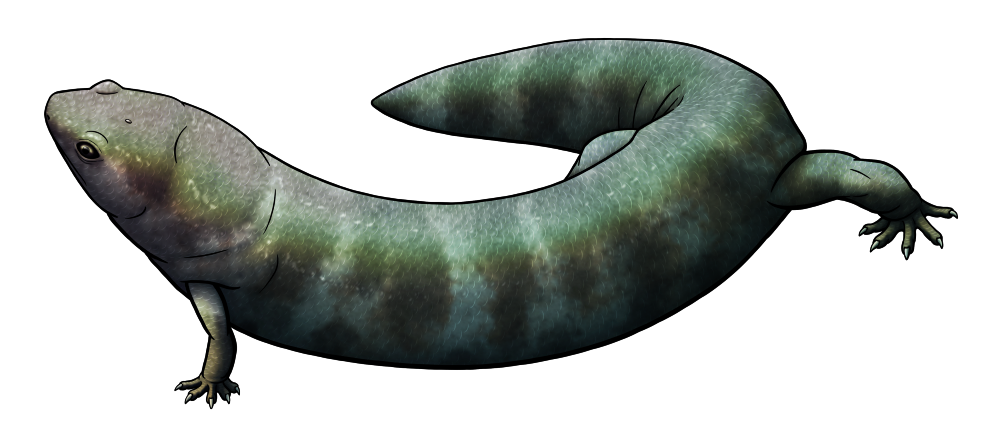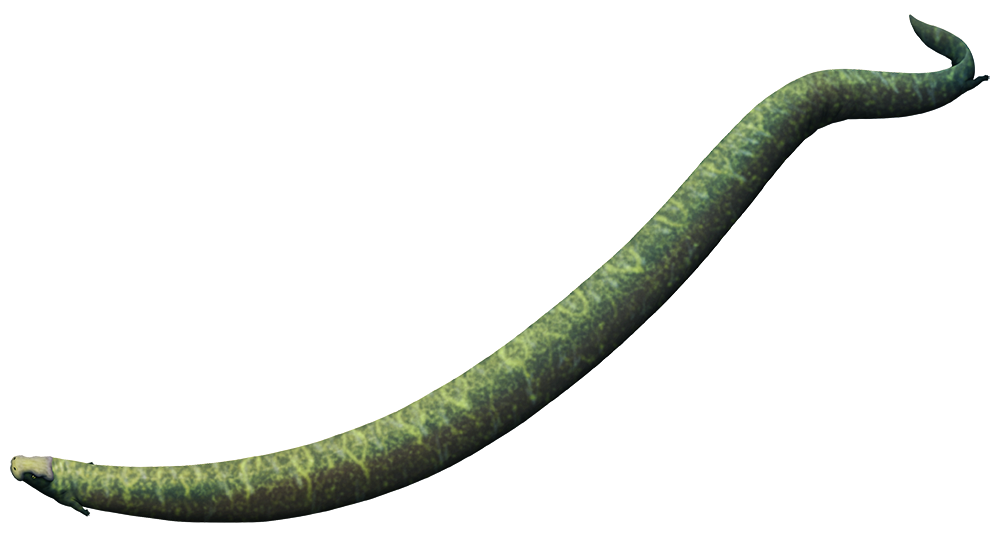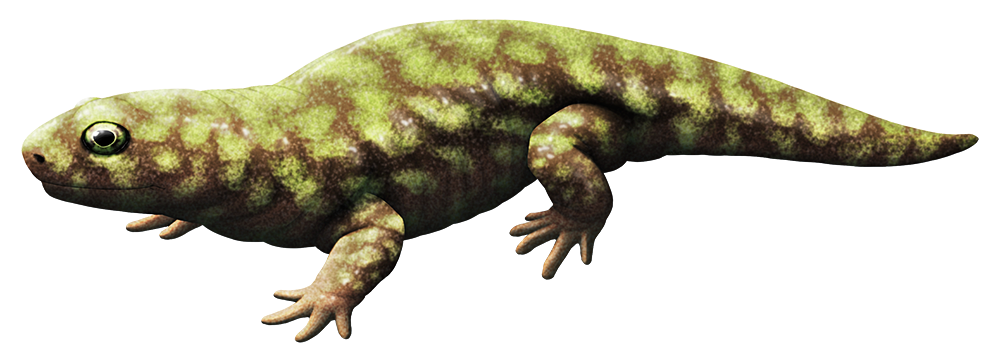Named after a legendary Scandinavian serpent, Joermungandr bolti here was a recumbisrostran “microsaur” – part of a group of animals that were traditionally considered to be lepospondyl amphibians, but more recently have been proposed to in fact be a lineage of early reptiles.
Discovered in the Mazon Creek fossil beds in Illinois, USA, this species dates to the late Carboniferous period around 310 million years ago. A single near-complete specimen about 5cm long (~2″) preserves impressions of the body outline and numerous tiny scales, giving us a pretty good idea of what it looked like in life.
Joermungandr had a long streamlined tubular body with small limbs and a short tapering tail, and a stubby snout with fused bones heavily reinforcing its skull. Along with microscopic ridges on its body scales that resemble the dirt-repelling scales of some modern reptiles, this combination of features suggest it was a headfirst burrower that wriggled its way through soil with snakelike motions.



